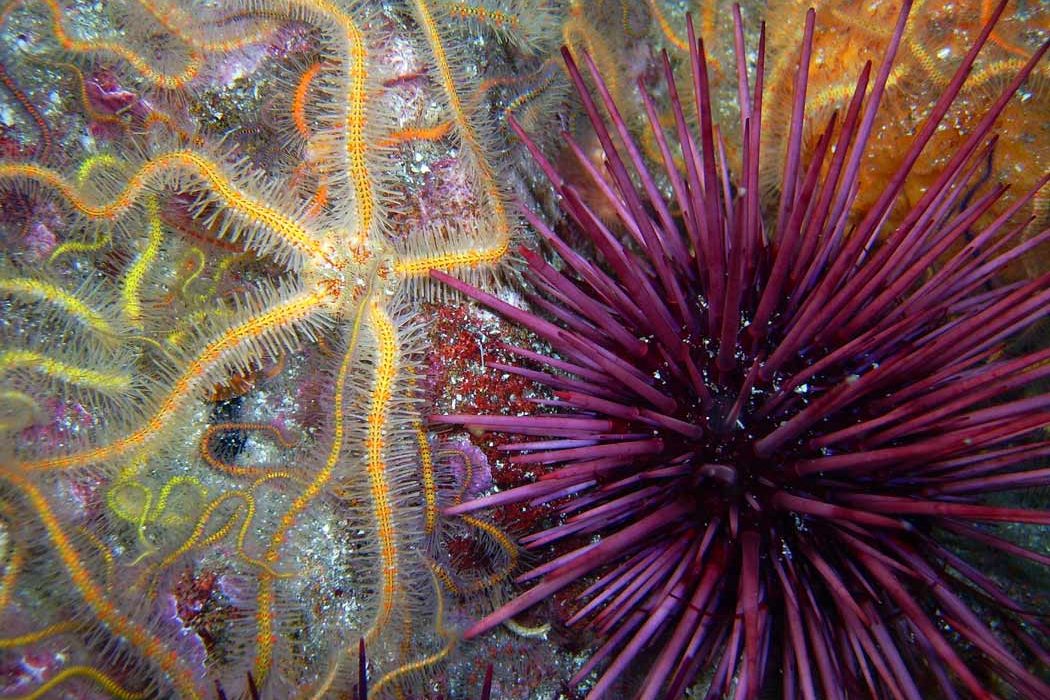Crinoidea Morphology With Sea Floor

Morphology as members of the.
Crinoidea morphology with sea floor. Crinoids like other members of the phylum echinodermata are exclusively marine animals with pentaradial symmetry and water vascular systems. The crinoids are a class of echinoderms. Though some groups have lost the stalk in adult forms crinoids are considered to follow the stalked radial morphology as the stalkless forms are derived from stalked ancestors. Cirri help anchor the stem onto the sea floor.
This view is generally applied to stalked crinoids or sea lilies as typical of the entire group because they most closely resemble their fossil forebears. A few crinoids have whorls of cirri spaced at intervals along the entire length of the stem. Crinoids once carpeted the ocean floor swaying with the currents. Crinoids evolved a plant like morphology so that they could remain attached to the seafloor while they spread their arms to catch food.
All crinoids are marine and live both in shallow water and in depths as great as 6000 meters the basic echinoderm pattern of fivefold symmetry can be recognized but most crinoids have many more than five arms. Crinoids are marine animals that make up the class crinoidea one of the classes of the phylum echinodermata which also includes the starfish brittle stars sea urchins and sea cucumbers. Crinoidea is derived from krinon which is greek for a lily crinoids capture food with tube feet when prey and detritus float through its feathery arms. The largest fossil crinoid stem which has ever been found is 130 ft 40 m long.
Crinoids class crinoidea and their relatives are small to very large up to 20 meters long echinoderms. These relatively fine grained biocalcarenites reflect shallow water deposition in a sheltered setting with a relatively firm sea floor and clear waters under middle sublittoral and subtropical conditions. A new species of brittle star ophiomitrella floorae is recorded from the lower two meters of the gronsveld member maastricht formation of late maastrichtian age c. Parrae have reached speeds of up to 140 m per hour while crawling across the sea floor.
Most fossil sea lilies were attached to the seafloor with stalks. A persistent traditional view treats living crinoids as chiefly deep sea organisms relicts of their opulent paleozoic past holding off final extinction in remote abyssal habitats. Those crinoids which in their adult form are attached to the sea bottom by a stalk are commonly called sea lilies while the unstalked forms are called feather stars or comatulids being members of the. In addition it is believed that the crinoids offer part of their stem up to the pencil urchin allowing it time to flee while the urchin feeds.
The first free moving feather stars appear in the mesozoic. They have two forms the sea lilies stalked forms attached to the sea floor and the feather stars which are free living. Crinoids are marine animals that make up the class crinoidea one of the classes of the phylum echinodermata which also includes the starfish brittle stars sea urchins and sea cucumbers.

















